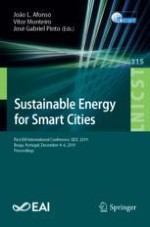This book constitutes the refereed post-conference proceedings of the First EAI International Conference on Sustainable Energy for Smart Cities, SESC 2029, held as part of the Smart City 360° Summit event in Braga, Portugal, in December 2019. The 23 revised full papers were carefully reviewed and selected from 38 submissions. They contribute to answer complex societal, technological, and economic problems of emergent smart cities. The papers are organized thematically in tracks, starting with mobile systems, cloud resource management and scheduling, machine learning, telecommunication systems, and network management. The papers are grouped in topical sections on electric mobility; power electronics; intelligent, transportation systems; demand response; energy; smart homes; Internet of Things; monitoring; network communications; power quality; power electronics.
